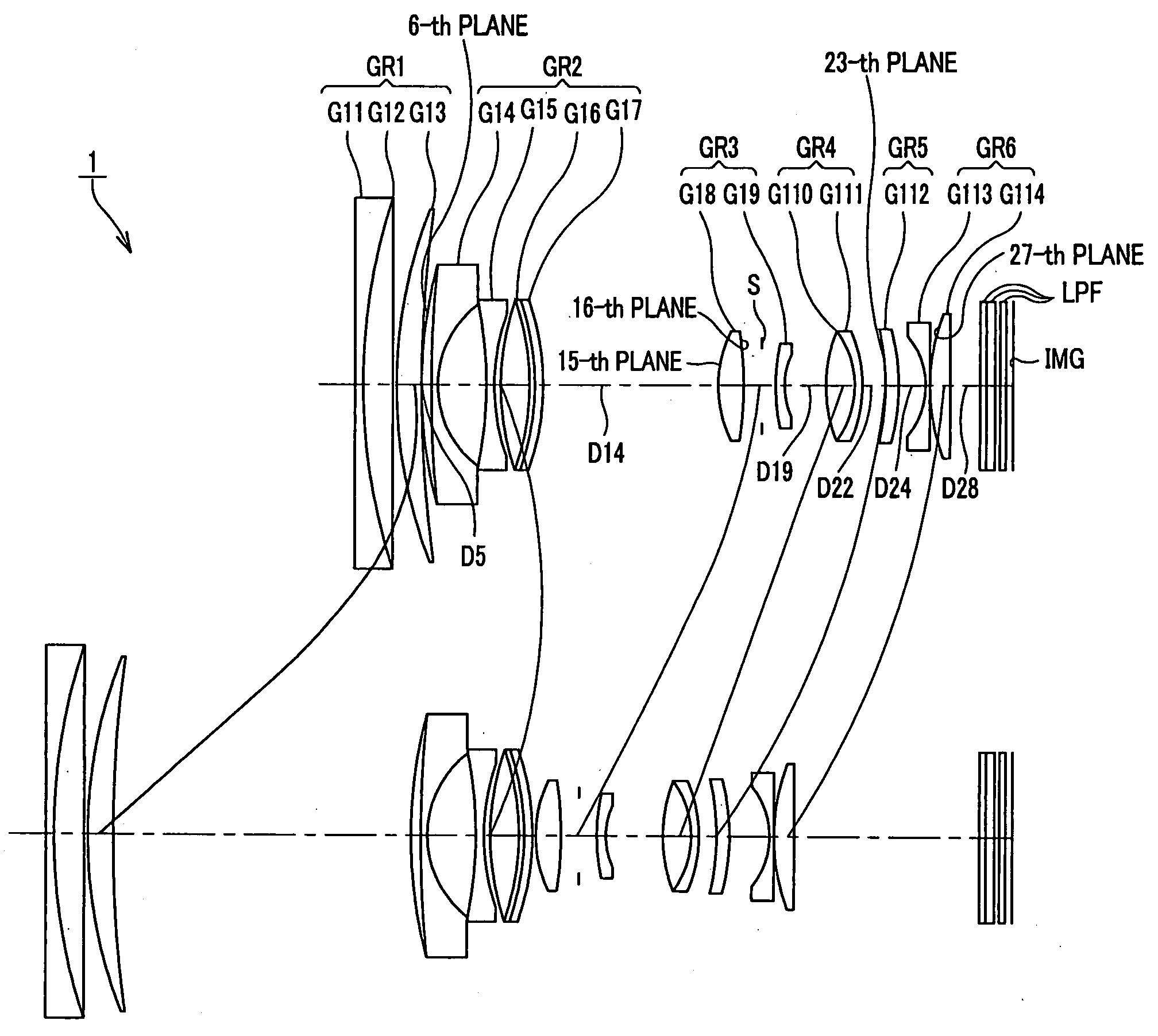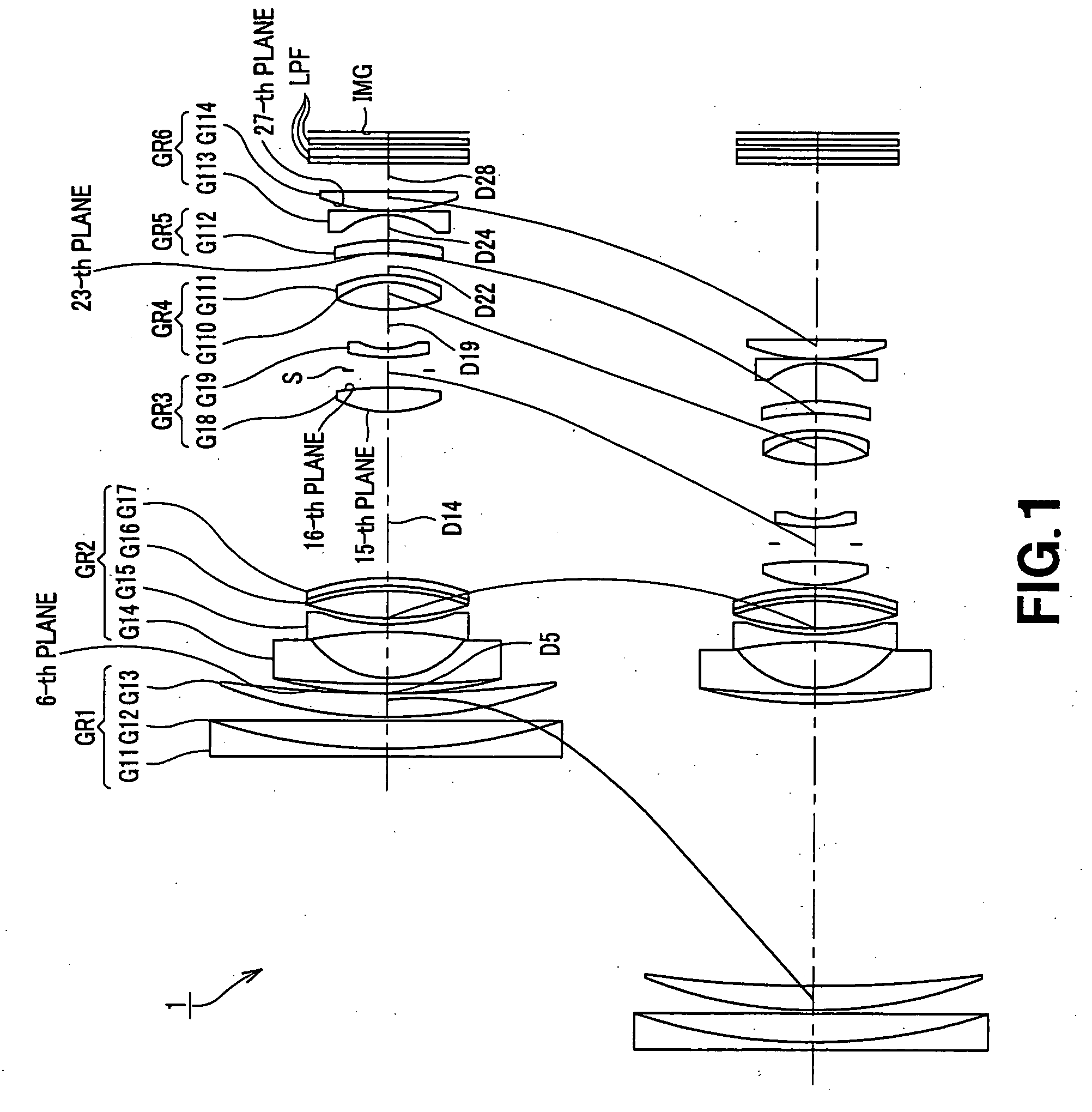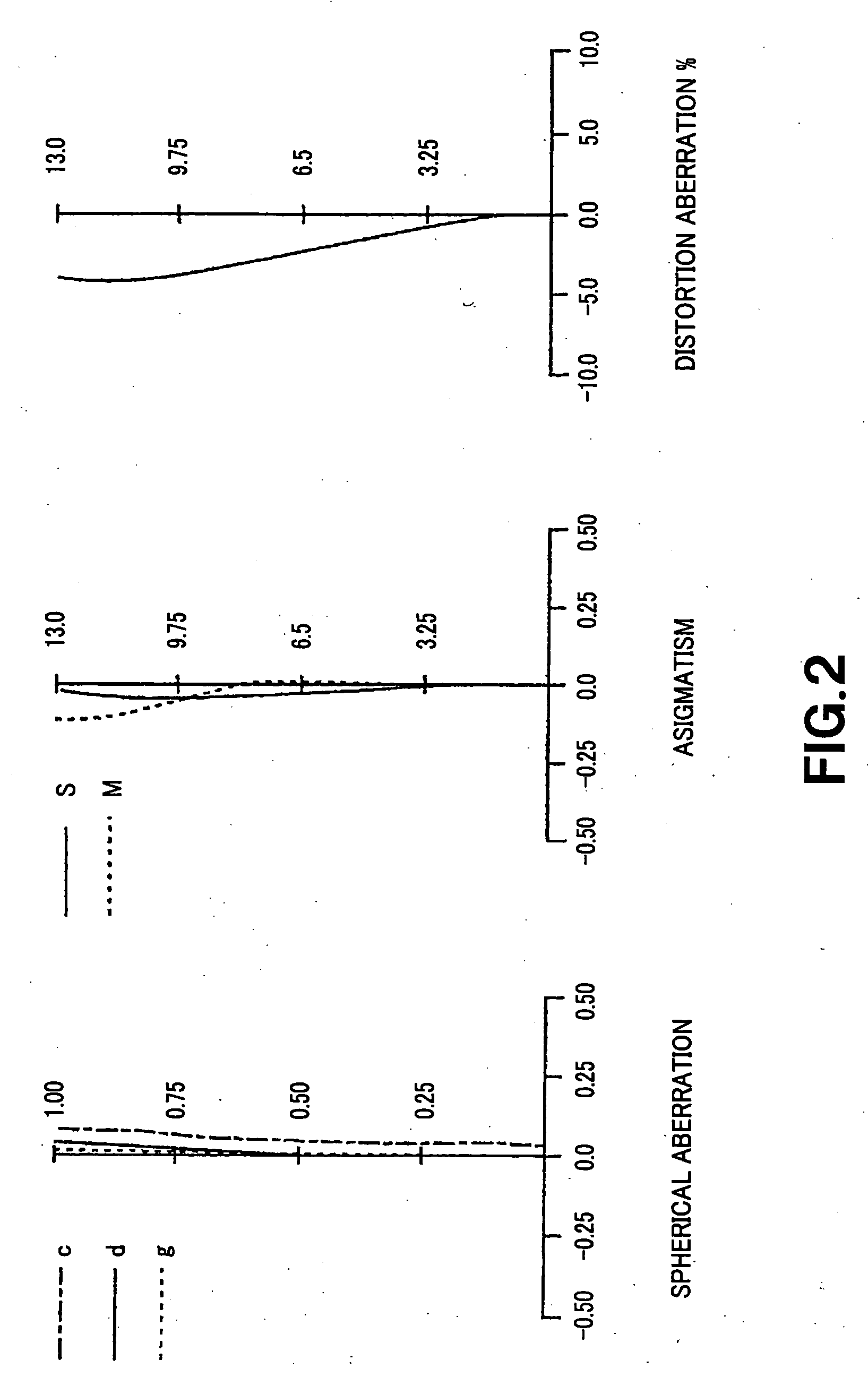Zoom Lens System and Image Pick-Up Apparatus
a technology of zoom lens and image pickup, which is applied in the field of new zoom lens system and novel image pickup apparatus, can solve the problems of difficult miniaturization and achieve the effects of high magnification, high magnification, and high magnification zoom
- Summary
- Abstract
- Description
- Claims
- Application Information
AI Technical Summary
Benefits of technology
Problems solved by technology
Method used
Image
Examples
first embodiment
[0061]FIG. 1 shows the lens configuration according to the zoom lens system of the present invention. There are arranged, in order from the object side, a first lens group GR1 having positive refractive power, a second lens group GR2 having negative refractive power, a third lens group GR3 having positive refractive power, a fourth lens group GR4 having positive refractive power, a fifth lens group GR5 having negative refractive power, and a sixth lens group GR6 having negative refractive power. In magnification changing or adjusting operation from the wide-angle end state up to the telescopic end state, the respective lens groups are moved on the optical axis as indicated by solid lines from the state shown at the upper row of FIG. 1 to the state shown at the lower row.
[0062]The first lens group GR1 is composed of a connection lens of a negative lens G11 and a positive lens G12 which are arranged in order from the object side. The second lens group GR2 is composed of a negative len...
embodiment 1
[0067]Various aberration diagrams in the infinity far in-focus state of the numeric value embodiment 1 are respectively shown in FIGS. 2 to 4. FIG. 2 shows various aberration diagrams at wide-angle end state (f=14.74). FIG. 3 shows various aberration diagrams at intermediate focal length (f=33.96) between wide-angle end state and the telescopic end state, and FIG. 4 shows various aberration diagrams at the telescopic end state (f=78.21)
[0068]In the respective aberration diagrams of FIGS. 2 to 4, in the case of the spherical aberration, ratio with respect to open F-value is taken on the ordinate and defocus is taken on the abscissa, wherein solid line indicates spherical aberration at d line, single-dotted lines indicate spherical aberration at C line, and dotted lines indicate spherical aberration at g line. In the case of astigmatism, image height is taken on the ordinate and the focus is taken on the abscissa, wherein solid line S indicates of sagittal image and dotted lines M ind...
embodiment 2
[0075]Various aberration diagrams in the infinity far in-focus state of the numeric value embodiment 2 are respectively shown in FIGS. 6 to 8. FIG. 6 shows various aberration diagrams at the wide-angle end state (f=14.73), FIG. 7 shows various aberration diagrams at intermediate focal length (f=33.94) between the wide-angle end state and the telescopic end state, and FIG. 8 shows various aberration diagrams at the telescopic end state (f=78.21).
[0076]In the respective aberration diagrams of FIGS. 6 to 8, in the case of the spherical aberration, the ordinate indicates ratio with respect to open F-value, the abscissa indicates defocus, solid line indicates spherical aberration at d-line, single dotted lines indicate spherical aberration at C line, and dotted lines indicate spherical aberration at g-line. In the case of astigmatism, the ordinate indicates image height, the abscissa indicates focus, solid line S indicate sagittal image surface, and dotted lines M indicates meridional im...
PUM
 Login to View More
Login to View More Abstract
Description
Claims
Application Information
 Login to View More
Login to View More - R&D
- Intellectual Property
- Life Sciences
- Materials
- Tech Scout
- Unparalleled Data Quality
- Higher Quality Content
- 60% Fewer Hallucinations
Browse by: Latest US Patents, China's latest patents, Technical Efficacy Thesaurus, Application Domain, Technology Topic, Popular Technical Reports.
© 2025 PatSnap. All rights reserved.Legal|Privacy policy|Modern Slavery Act Transparency Statement|Sitemap|About US| Contact US: help@patsnap.com



